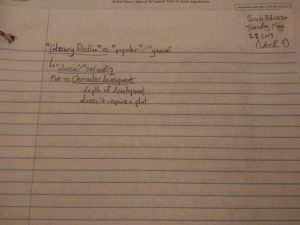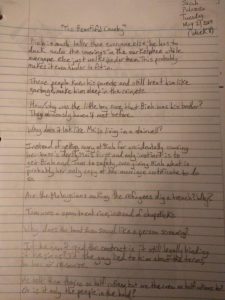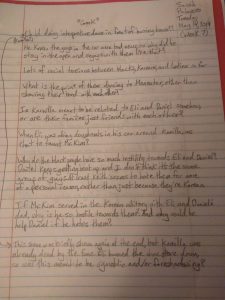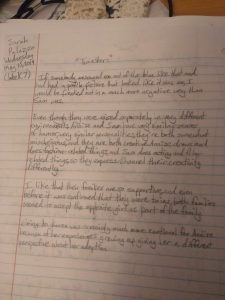
MonthMay 2019
https://asamnews.com/2019/05/25/marvel-to-launch-team-of-asian-superheroes/
This is the first I’m hearing about this, so this is really exciting for me! I’m very vaguely familiar with Amadeus Cho and even less familiar with Cindy Moon, but these other characters are completely unknown to me. I’ll be interested to see what they do with them, character and plot-wise, or if they’ll be tired old stereotypes. Hopefully not the latter, but sometimes it’s hard to tell if Marvel is genuinely doing stuff like this because they want to and think it’s a good idea, or if they’re trying to get “points” for diversity to stave off backlash (like when they made Captain America secretly Hydra/a Nazi a few years ago and then almost immediately backpedaled because everyone was furious).
Going just by the costumes, none of them look particularly stereotypical, which I suppose is probably a good sign? I have a feeling that this team isn’t going to be very popular just because they’re Asian, so hopefully if that does happen Marvel executives don’t use that as an excuse to not include as much diversity in the future and go back to drawing a bunch of white dudes beating the crap out of each other at the slightest provocation.
Unaccustomed Earth
- Page 4, Ruma’s father seems to have a very distant relationship with her. Is that because he’s only talking through postcards across large distances, or is it because of his grief?
- Page 7, Ruma seems to be struggling with her own grief on top of her responsibilities to her family. She feels like she’s obligated to take care of her father, even if he doesn’t necessarily need it, and it seems like it’s causing a bit of tension.
- Page 14, they apparently wear shoes in the house, which is interesting to me. Ruma says she’d gotten out of the habit of taking her shoes off when she comes in, but that’s not strictly an Asian custom since some people are more comfortable without shoes on inside.
- Page 20, it seems like the Pinocchio marionette’s strings being tangled might wind up being foreshadowing for something? Ruma’s father says that it had “a knot in the center that needed to be undone first.”
- Introduction
- Brief history of superheroes
- Modern superheroes and superhero culture, Marvel vs. DC, etc.
- Brief history of superheroes
Superheroes have become an increasingly popular part of mainstream culture in recent years, a phenomenon helped along by the nearly constant stream of superhero movies that began in the 2000s. From the X-Men movies with Patrick Stewart as Professor Charles Xavier and Hugh Jackman as Wolverine, to Tobey Maguire as Peter Parker in the Spider-Man trilogy, these movies did a lot to help popularize superhero movies as a part of mainstream culture. There had been other superhero movies before this, of course, such as with the various Batman movies over the years, but they were more spread out. Flops such as Batman and Robin became laughingstocks, as it was considered too campy and not nearly realistic enough to satisfy an audience that had come to expect grit and darkness from Batman, a far cry from the days of Adam West’s rendition of the “Caped Crusader”. DC’s superhero movies have improved in quality and diversity over the years, expanding from Batman and the Green Lantern to other heroes such as Wonder Woman and Aquaman, whose titular characters were both played by people of color. But Marvel has outpaced DC in sheer popularity, with their steady stream of box office hits infusing the public consciousness with a superhero frenzy. The Marvel Cinematic Universe, or MCU as it’s known by fans, began in 2008 with the first Iron Man movie, and continues in the present day with Avengers: Endgame which was released earlier this year. With the charismatic Robert Downey Jr. as Tony Stark, Iron Man sparked a wave of superhero movies the likes of which had never been seen before. The MCU was probably the most ambitious movie series that had been attempted before as each movie was part of a single cohesive universe, so the writers had to make sure that each movie built on the previous ones. This kind of worldbuilding had been previously confined to mediums such as comic books, which as the source material for the MCU helped make it feel as though the movies were depicting the fans’ favorite comic book heroes come to life. This is part of what made the MCU’s popularity soar.
This is very late and I still need to add a bunch of analysis and flesh it out a lot, but this is what I have so far!
EDIT: Added page numbers and made it more clear what came from where.
I thought this article was interesting, and it brings up what I think is an important topic right in the first few sentences; media often focuses very heavily on white relations with minorities rather than minorities with each other. I was thinking about it as I read the article, and it made me a little angry, because the more I think about it, the more it feels like white people tend to think of things in terms of white vs other, which not only dehumanizes other races, but makes them feel interchangeable. There’s no point in defining interracial relationships as anything other than Asian and white, or black and white, or “Mexican” (Latinx) and white, because they’re all minorities and therefore all interchangeable, right? It’s like when they call all Asians with the C-slur because they assume they’re all Chinese, or don’t care whether or not they’re actually Chinese because they don’t consider them human anyway.
Also, the end of this article is hopeful and positive, and serves to remind readers that relationships should be about love, not about what race you are. I feel like many people don’t understand or care about whether there’s actually love involved, and I think that tends to hurt society as a whole.
Miss Lien:
- “The oldest of seven children, Lien was hardly ever alone.” (pg 4) Since it was already established that she was having a baby, obviously she did manage to be alone at some point. Was it because of someone taking advantage of her or because she was a “little slut” as the people on page 3 so rudely put it?
- “But Lien knew it wasn’t her mother’s age that worried them.” (pg 7) My first thought was that she had cheated on Lien’s father or something, and that was why they reacted strangely to the pregnancy. It wasn’t until they started talking about a war that I realized they were probably worried about safety.
- “The midwife spread her lips, revealing black-lacquered teeth. Lien realized she must have come from a family of wealth.” (pg 8) What is put on the teeth to make them black, and what makes that a sign of wealth? How did a custom like that come about?
- “I wasn’t sure about looking at my first either, knowing I had to give it up.” (pg 12) Are these girls being purposefully impregnated by men – possibly American soldiers? Or are they doing this themselves because they’re desperate and they don’t have any other ways to make money? Or is this place some sort of shelter for pregnant girls? I’m confused.
A Temporary Marriage
- “Mrs. Shin thanked him, all the time wondering if he was as innocuous as he looked. …They needed photos to authenticate their engagement, then their marriage, to immigration.” (pg 2) Mrs. Shin is obviously extremely uncomfortable with being around Mr. Rhee, and exhibits all the same fears that women in the US have concerning strange men, so the marriage thing really surprised me. This really hits home the reality that people in Mrs. Shin’s situation are often really dependant on the goodwill of others, and the unknowns associated with coming to America can be terrifying. Intellectually I knew this already, but this helps make it much more apparent on a personal level.
- “They had done well enough until the recent recession, which had even lawyers watching their expense accounts.” (pg 4) This story seems like it’s set more recently than the other books we’ve read so far, which all seemed to almost make immigration and its related struggles a thing of the past as a result of being set decades ago. In this, immigration still seems to be a struggle financially at the very least.
© 2025 Sarah's A-POP Blog
Theme by Anders Norén — Up ↑


